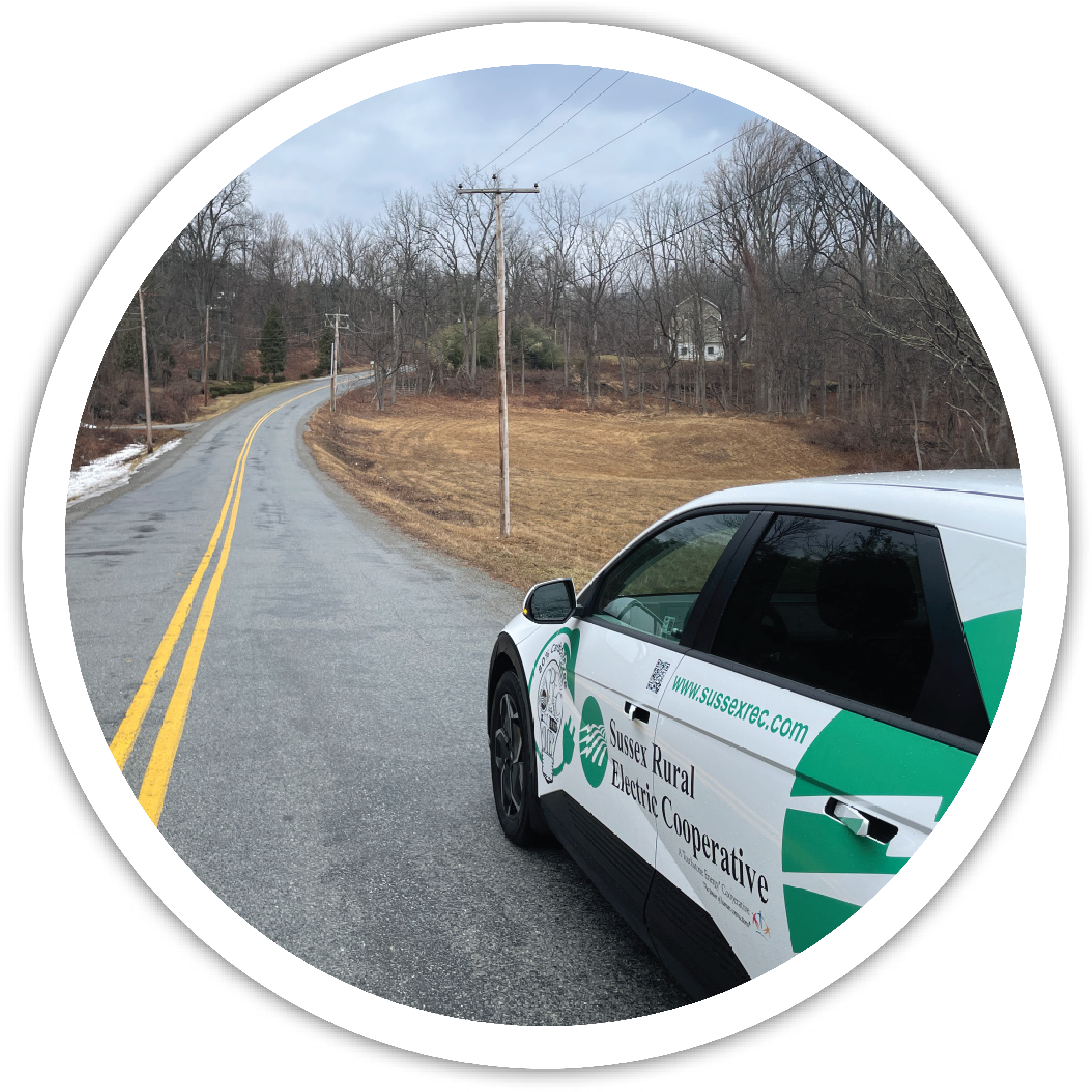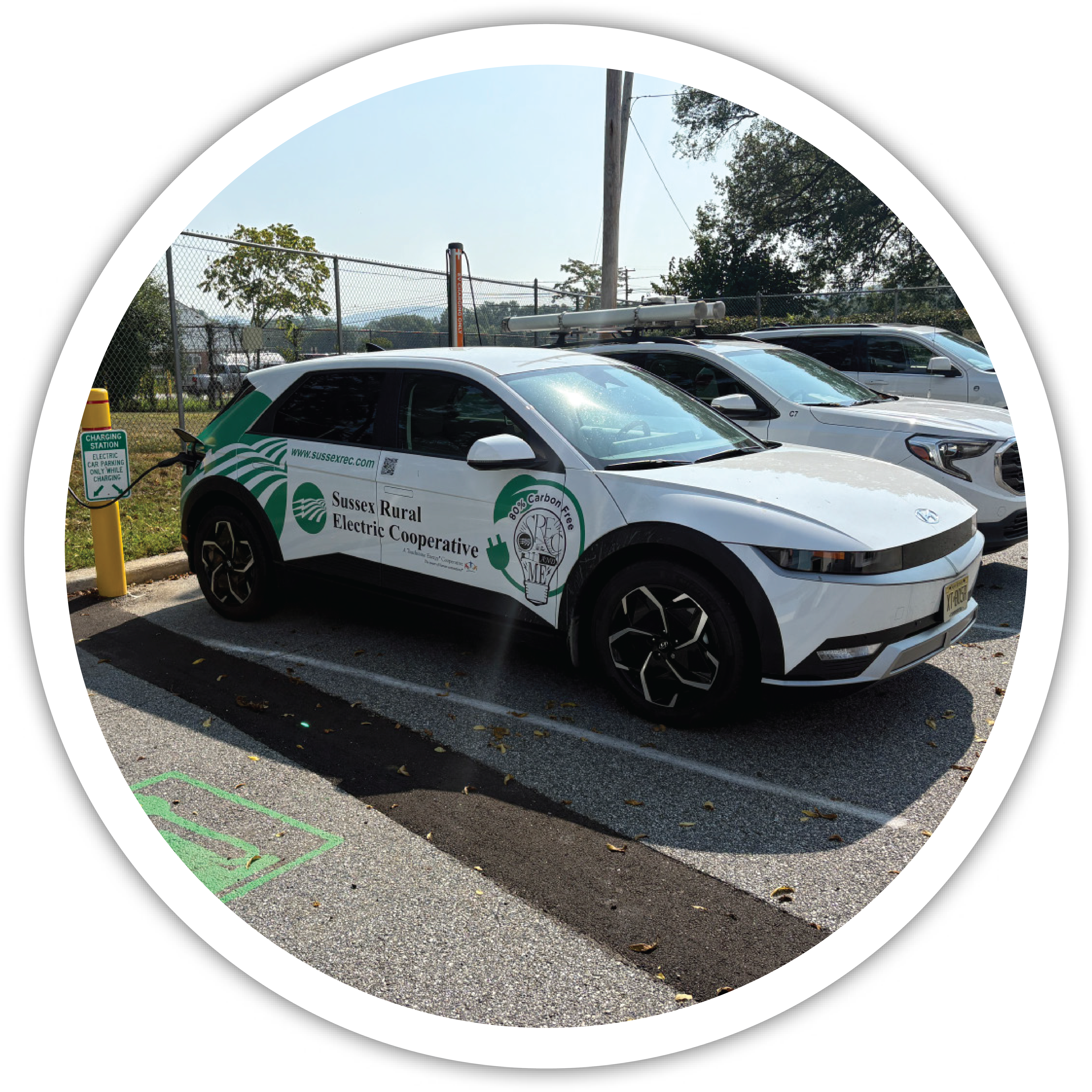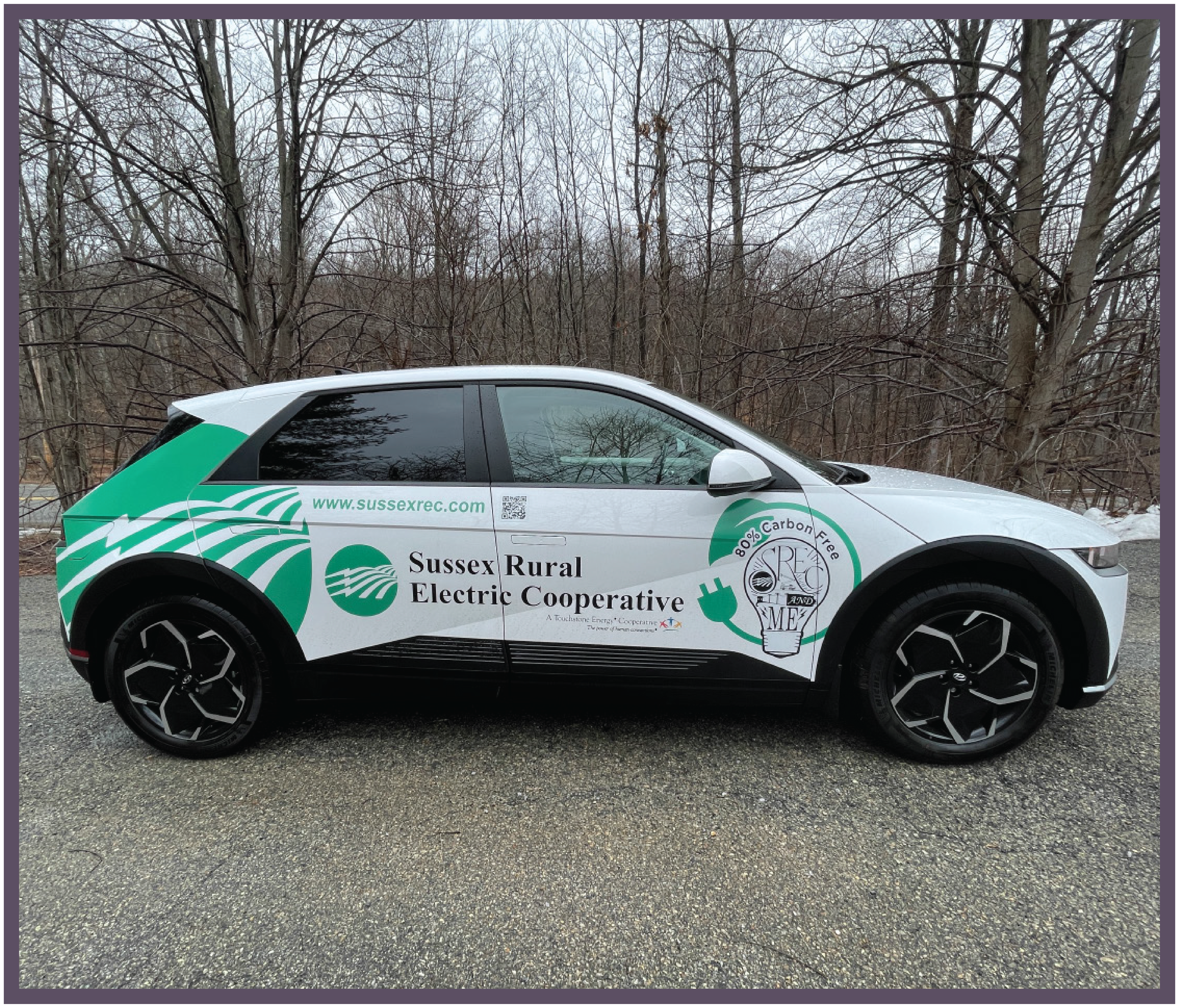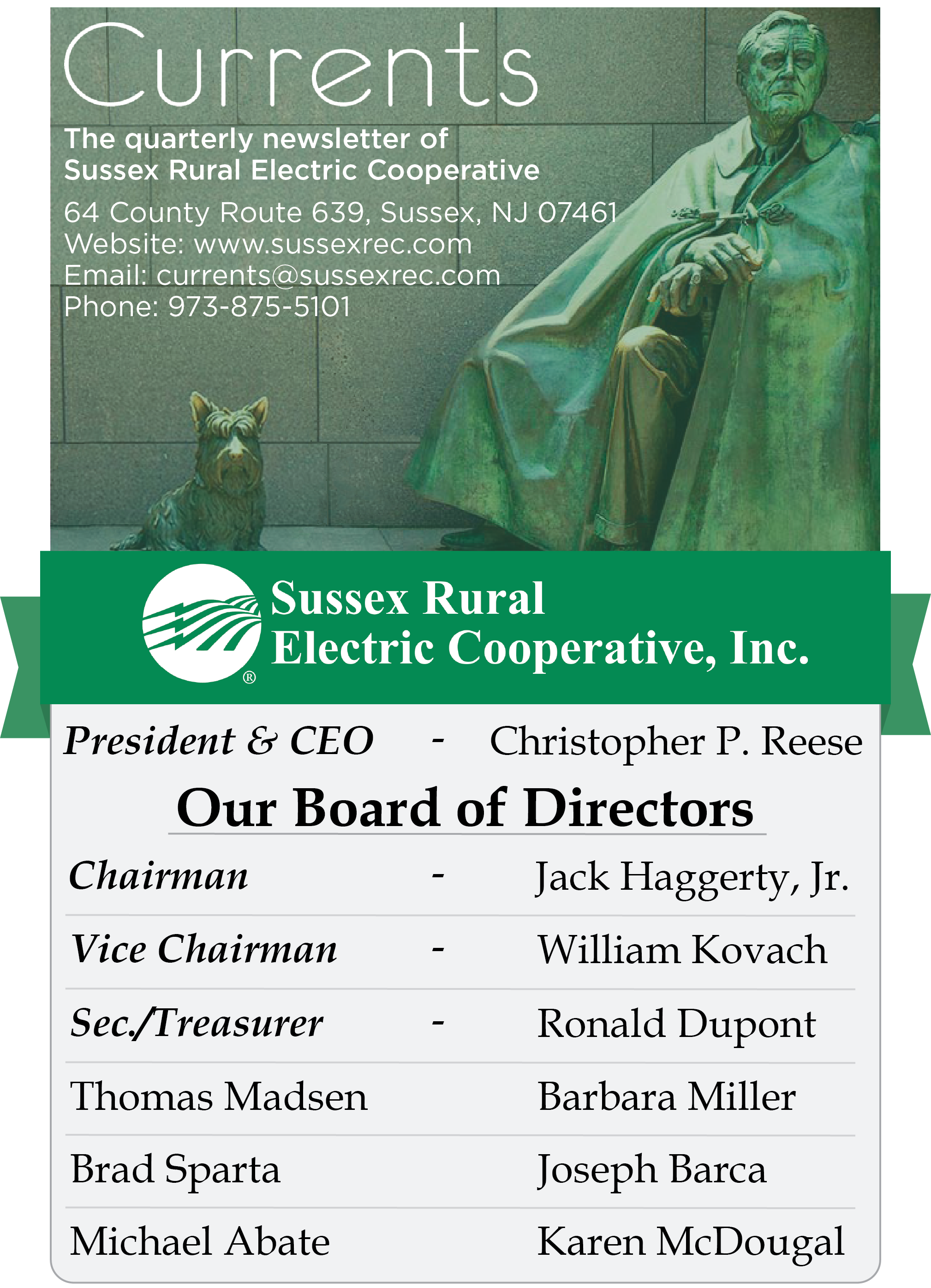To view the full print/pdf version of 2025's issue 3 of Currents, click here
For previous issues of Currents, visit our Currents Library
Our EV Journey
By: Steve Sokolowski, Marketing & Member Services Associate
Email: ssokolowski@sussexrec.com
 As your local electric co-op and trusted energy advisor, we at Sussex REC seek to be knowledgeable about all major electric trends.
As your local electric co-op and trusted energy advisor, we at Sussex REC seek to be knowledgeable about all major electric trends.
Electric vehicle purchases have been on the rise for years. We’ve watched EV adoption closely, with the goal of adding one to our fleet when the time was right to help us get a fuller understanding of what they’re like to use.
Over multiple years, we researched available models to find the right car to learn from. This was an unexpectedly long process. With few available to purchase locally, it was a challenge to find one that would work for our needs. We prioritized EVs manufactured entirely in the U.S., but after years of searching we ultimately seized the opportunity to purchase an EV with a great rating, great value, and that would be available to most of our members.
We secured our 2024 Hyundai Ioniq 5 last year from our local Hyundai dealership in Sussex. Two private charging stations were installed at our facility for fleet use, made possible through a grant from the State of New Jersey.
 The plan has always been for Sussex REC to use its EV as both a hands-on educational resource and a marketing tool. Shortly after purchasing, we worked with Jersey Signs in Andover (owned by a Sussex REC member)
The plan has always been for Sussex REC to use its EV as both a hands-on educational resource and a marketing tool. Shortly after purchasing, we worked with Jersey Signs in Andover (owned by a Sussex REC member)
to design and install a wrap on the car that both looks great and makes the car identifiably “us.”
Spending time using the Ioniq gave us firsthand experience with some of the pros and cons of driving an electric car. It is very “zippy,” able to go from 0 to 60 mph in 4.4 seconds. It boasts a very modern interior (whether you like that style or not), with a large LCD display, a “push to start” button, and various notification systems for blind spots, lane switching, and snitching on passengers not wearing seatbelts.
Early on, we faced a recurring issue with the EV battery not charging properly, which drained the car battery as well. It had to be jump-started to bring its normal charging systems back online. This was fixed by a recall but caused a lot of headaches for our team.
I also got to experience “range anxiety” firsthand. A trip to State College, PA for a meeting pushed the car’s 260-mile range nearly to its limit. I arrived at my destination with barely 9% battery and, presumably, stress-induced heart palpitations.
 Since adding the Ioniq to our fleet, adoption of EVs in the U.S. has cooled down. While more and more manufacturers are offering electric-powered options, high prices, a shifting political landscape, and the lack of a robust public charging infrastructure have all contributed to reduced demand.
Since adding the Ioniq to our fleet, adoption of EVs in the U.S. has cooled down. While more and more manufacturers are offering electric-powered options, high prices, a shifting political landscape, and the lack of a robust public charging infrastructure have all contributed to reduced demand.
The lack of public chargers is certainly an issue for EVs in our area. They have not taken over our territory just yet, but we do see more of them every day. For these members, we’ve explored the idea of an off-peak rate for EV charging. For now, we’ve taken our foot off the accelerator. EV charging has not yet caused any situations, such as dramatic increases in load or overloaded transformers, that would make an off-peak incentive required for us.
Ultimately, we are taking a “wait and see” approach for any EV programs. If you drive one, we invite you to tell us about it at www.sussexrec.com/evs. Through your feedback and our own experiences with the Ioniq, we will continue to learn about EVs, the needs of their drivers, and the role they’ll play in our community in the years to come.



